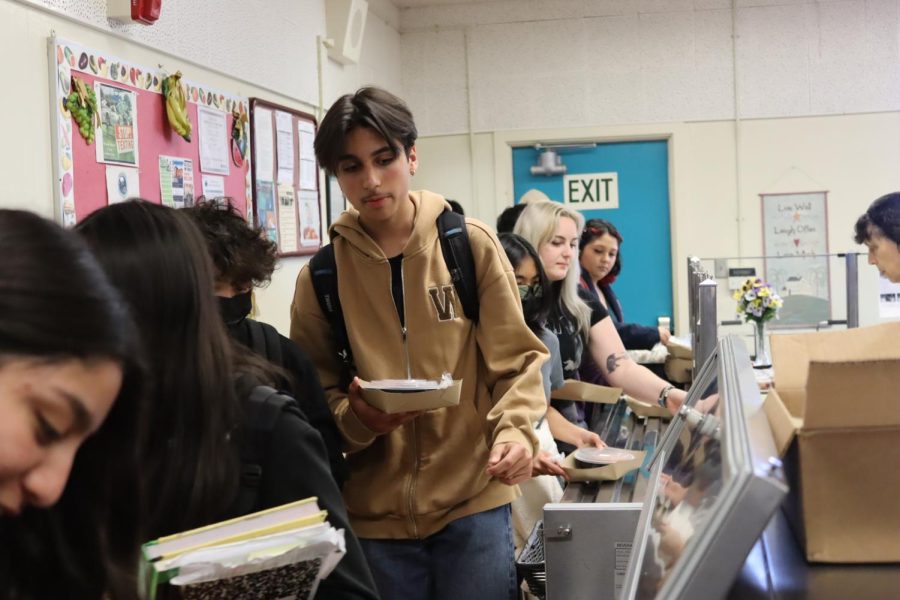Freshman Sebastian Olfatmanesh stands in line as he picks out food from the cafeteria during lunch on March 15. Many students take the school lunch, which is free.
Cafeteria works to curb waste
April 21, 2023
Senior Kayla Lopez grabs the breakfast that the school offers. Depending on what it is, she sometimes throws it away or just doesn’t pick it up. This is the same process many students go through when deciding what they want to eat during lunch and breakfast.
“Usually when there’s any kind of burger in the morning, (it) doesn’t catch my eye,” Lopez said. “I’m just a really picky eater so I honestly pick and choose what I eat.”
According to Daniel Pearl Magnet High School Food Services Manager Kathleen Mrasz, students have to take fruits when getting lunch and Breakfast in the Classroom because they provide a healthy balance, which was implemented because of the Healthy, Hunger-Free Kids Act. This has led some students to take fruit because they are required to but then throw it away, contributing to food waste.
Approximately 85 to 100 students grab lunch and these numbers haven’t changed much after school lunch became free, Mrasz said. The universal school meal program, which was implemented during the 2021-2022 school year, provides all 6 million public school students in California with free school meals. The program offers every student a free breakfast and lunch, making California one of the first states to implement a statewide universal meal program for students.
The cafeteria minimizes its food waste by sticking close to the numbers, such as if 90 students get lunch the cafeteria will make around 100 meals. This means DPMHS typically has very few meals left over, so the cafeteria doesn’t donate food. While this process usually works, the cafeteria offers multiple options for lunch, making it hard to keep the same number of meals.
“I try to stay very close to (the) numbers (of meals compared to students who take food), so we have very little waste,” Mrasz said.
Mrasz said the cafeteria has been listening and noticing what students are taking and leaving behind when they grab lunch or breakfast. They have found that students prefer food choices such as coffee cake, spicy chicken sandwiches and spicy chicken strips, as well as the western burgers and cheeseburgers. In comparison, other foods like cheese quesadillas and beef sausage sandwiches are taken less often. When students don’t take these options, it wastes food, which the cafeteria has been noticing.
“I only get the food I’m actually going to eat, not the ones I’m going to put to the side,” junior Anthony Jimenez said.
Many students said they remain conscious of food waste from school meals and work to reduce their individual impacts.
“I minimize (waste) by trying to eat what I can eat and not overwhelm myself with food,” senior Christopher Jacobo said. “If I can just stomach the main course and a fruit, that’s (when) I only get what I need and I won’t get anything else.”
Print Editor-in-Chief Delilah Brumer contributed to this report.
